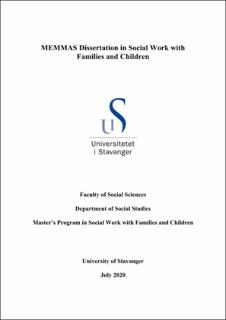| dc.description.abstract | More than 1,000 Indonesian immigrants are living in Norway. They consist of housewives, professionals work in oil and gas companies, nurses, and students. Some professionals are, at the same time, housewives who work during the day. Many Indonesian immigrant mothers are married to Norwegian men or brought to Norway by their Indonesian husbands. They have children who receive education at Norwegian schools, including sexuality education. Meanwhile, sexuality educations in Norway and Indonesia are significantly different. Norway provides comprehensive sexuality education from elementary school until high school, whereas Indonesia primarily uses an abstinence-based approach. Parents in Indonesia often avoid discussing sexual and reproductive issues with their children. If parents decide to give sexuality education, mothers, as the primary caregivers, traditionally play a more significant role in that task. As a result, many adolescents try to obtain information regarding their sexuality through other channels, such as social media, magazines, books, websites, etc. Those who collect improper or inaccurate information might end up in difficult situations, such as teenage pregnancy and sexually transmitted diseases (STDs). Therefore, sexuality education by parents, especially by mothers, plays an important role for children. As the majority of Indonesian immigrant mothers grew up in their home country, they gained information regarding sexuality education in Indonesia. However, they have been living in Norway long enough to experience the acculturation process with Norwegian beliefs, perspectives, and culture. This process might or might not transform their conceptualisation of what proper sexuality education is and how sexuality education runs in Norway. This qualitative research aims to gain a fundamental understanding of the perception of Indonesian immigrant mothers living in Norway concerning sexuality education received by their children in Norwegian schools, and how this perception affects the way they teach their children about sexuality. Six Indonesian immigrant mothers were recruited as participants through purposive and snowball sampling. Data were collected using an indepth, semi-structured interview, and the questions are open-ended. The collected data were analysed using a thematic analytical method. The research findings reveal that Indonesian immigrant mothers in Norway generally have positive perceptions regarding sexuality education received by their children at Norwegian schools. They also perceive that sexuality educations in Norway and Indonesia are significantly different. The most noticeable dissimilarities are concerning culture and religion, and the sexuality education policies. These perceptions and realisations have affected the way they teach their children about sexuality. Simultaneously, the acculturation process plays pivotal role in shaping or transforming the teaching style of these mothers. Both Norwegian and Indonesian sexuality educations can be improved. Norwegian government could add and emphasise the social aspects of having a sexual engagement, whereas Indonesian government needs to attenuate the stigma of ‘sex is taboo’ and familiarise sexuality education in society. | en_US |
